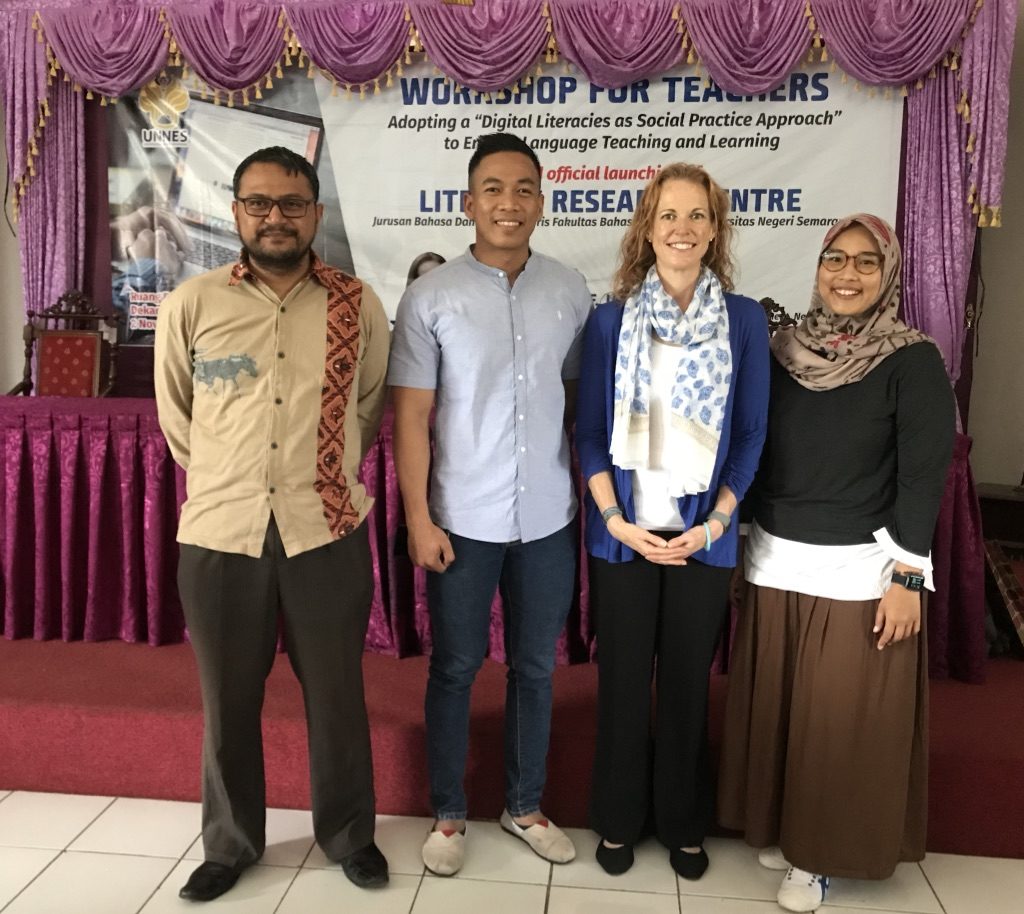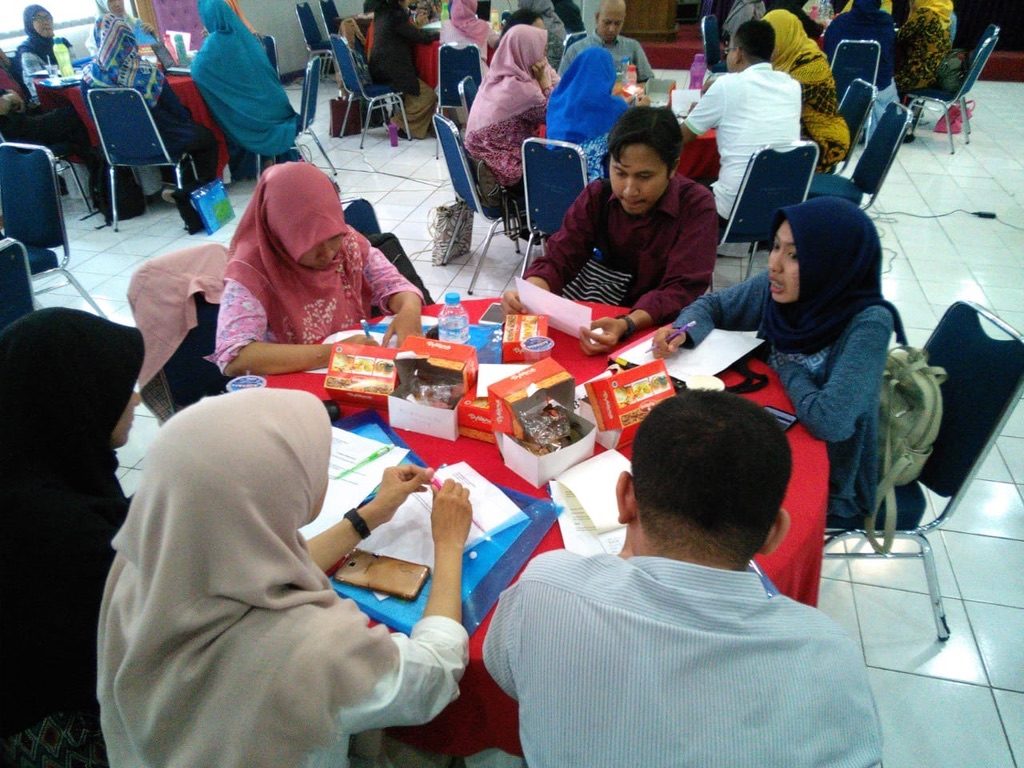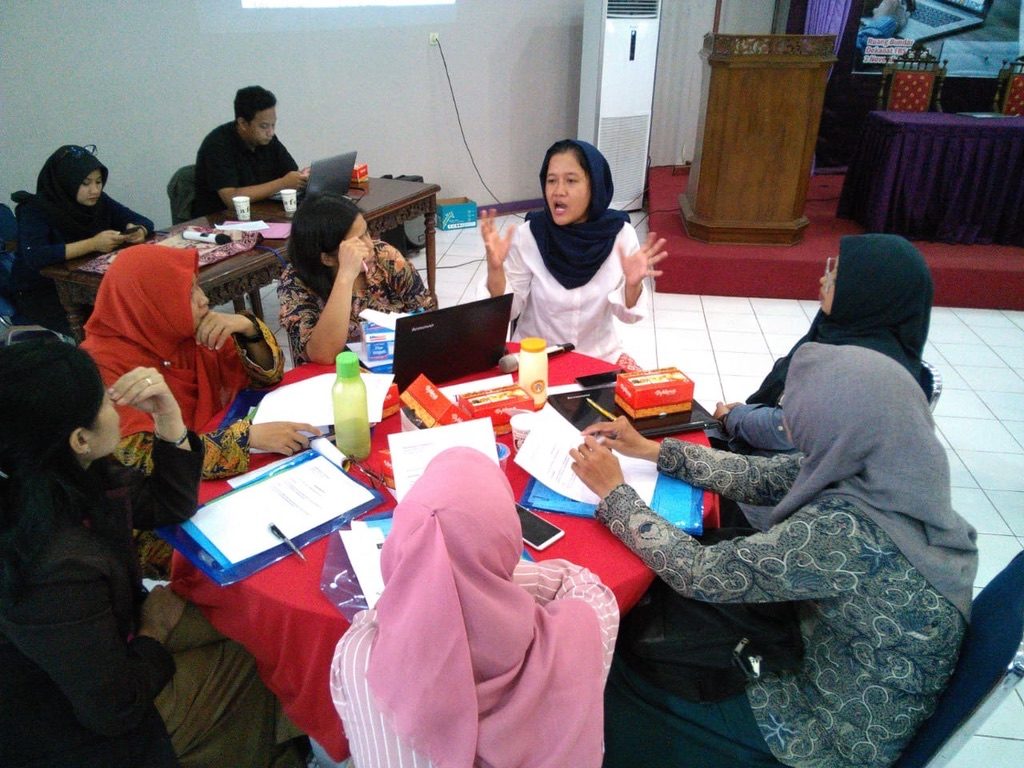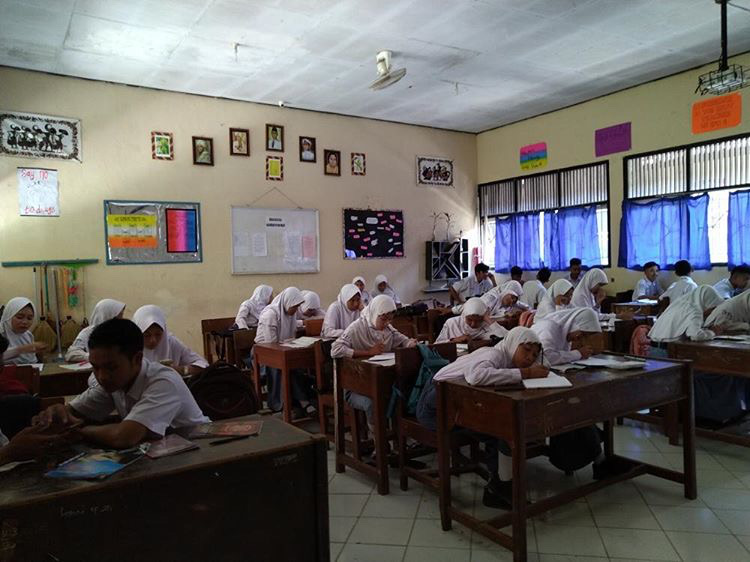There’s nothing better than working with a room full of educators trying to make connections between research and their practice!
Saturday was the UNNES English Department’s free workshop for local teachers, an annual service project that connects the research and practice of the university with educators from around the area. Working together with the committee, we planned a day that would allow me to engage in meaningful work aimed at shifting Indonesian teachers’ understanding of digital literacy from one rooted in a skills-based approach and tangled up in fears about technology leading to an era of disruption, to one rooted in a social practice approach to literacies and leading to productive possibilities for them and their students.

When the day came, the stage was set, literally, and the room began to fill with local educators from a range of interesting teaching contexts, including:

- Public elementary, junior high, and senior high schools, representing grades K – 12
- Religious-focused schools, including an Islamic boarding school
- Vocational education for accountants, mechanics, and more
- An all-girls high school
- Private English language schools
- UNNES
- Other local universities
- and, the context that most stretched my ability to think on my toes about how to make connections between my research and their teaching environment: the Police Academy!

To facilitate the shift I was hoping to help teachers make, I shared insights from new literacies theory (largely drawing from how I design and teach my EDU498: Literacy Learning as Social Practice course at the Warner School, and my research in connecting fanfiction with classrooms. I then gave workshop attendees time to follow the advice that my co-author and I gave in our article, and let them explore online communities to become more familiar with the possibilities. I gave them options for what sites they might want to look at, and a list of guiding questions. I roamed around, answering questions and brainstorming possible connections between what I shared and what they teach. The room buzzed, and teachers really got into digging around on Fanfiction.net, Wattpad, Storybird, PowerPoetry.org, YouTube, the opinion section of the Jakarta Post, LinkedIn, and more! I came across one teacher who was taking detailed, organized notes of what he was discovering – notes he sent to me later that day, and I am impressed with the connections he saw and how much he got out of the time to explore.

After their guided explorations, I asked them to share out what they found and answered their questions, including wonderings about how to avoid “digital cheating” (my answer: design more complex tasks that require students to do more than retell/copy/stay at the lowest levels of Bloom’s Taxonomy) and how to get students to get started with writing in English when they feel insecure about their grammar/vocabulary skills. And, just as put up my final slide to indicate that it was time for lunch, the room went dark and the campus went into a temporary blackout! Perfect timing for our lunch break!

At the end of the day, I hope teachers came away with an understanding that taking a “digital literacies as social practice” approach to integrating technology into their instruction actually aligns well with the current Indonesian government’s goals for “Making Indonesia 4.0.” That by giving their students access to identities as English communicators and content creators in online spaces, they are supporting the country’s efforts to “boost the quality of local human resources” in this latest industrial era. But, even more so, I wanted them to think of digital literacy as more than creating a Kahoot! game and calling it digital “learning.” I wanted them to find meaningful connections between my social practice approach and their curriculum/instruction/students.
I’m thrilled to say that this might be exactly what happened, for at least some of the participants. How do I know? Well, while drafting this post, I received an Instagram message from an attendee who teaches English as an Islamic boarding school. She wrote to tell me “Today, I ask my students to make their own fanfiction.” In our follow up exchange, she told me that the students were “creative” and “not shy to show me and ask for feedback.” Responses like this tell me that I’m exactly where I need to be, doing exactly what I need to do. This work fuels my soul!


Great sharing and it seems like the gathering went according to plan – share resources, explore together, reflect and then move into action of the classroom.
Kevin